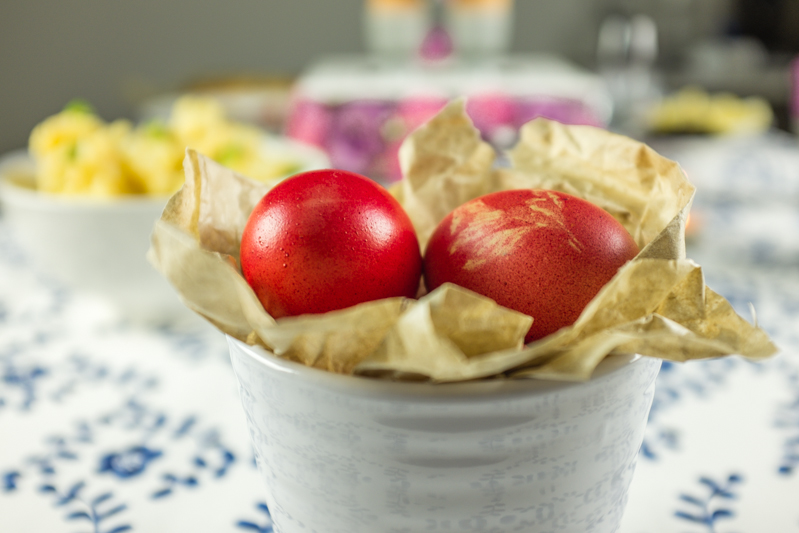Learning how to dye red Easter eggs, the kind that can be found at any Macedonian or Greek Orthodox Easter celebration is simple.
The red dye represents the blood of Christ, shed on the cross at crucifixion, the hard shells represent Christ’s tomb and the cracking of the shells symbolises Christ’s resurrection.
Growing up, I can’t recall being told this story about the symbolism of the red Easter egg, however I must have been told at some stage. What I remember is the last bit, the cracking of the eggs, which was a game that all the children in the family loved playing (in fact it’s still great fun now). Two people grab an egg, and hit the tops against each other. Whoever’s egg shell doesn’t break is the winner, and is rewarded by the promise of good luck and, of course, bragging rights.
These will last just over a week in the fridge (as anyone who has grown up in an Orthodox family and eaten hard boiled eggs for over a week straight after Easter can attest to!)
Preparation Time: 20 minutes / Cooking Time: 10 minutes
Ingredients
- 1 tsp (15ml) white vinegar
- 200ml boiling water
- 20 drops red food colouring
- 12 eggs
- 10ml vegetable oil
Method
- Place the eggs in a large saucepan with water. Simmer for 7-10 minutes.
- Remove the eggs from the water and transfer into a high walled heat proof container.
- Add 20 drops of red food colouring and 200ml of boiled water.
- Ensure the eggs are entirely submerged. If they are not, add a little more boiling water and a few extra drops of food colouring.
- Leave the eggs in the coloured liquid for 15 minutes.
- Remove the eggs from the liquid with a spoon and dry on kitchen paper.
- Rub the eggs with a little oil and refrigerate until you are ready to eat them.
Notes
In some cultures, different dyes and patterns are used. If you want to experiment and make your eggs are little more interesting then before submerging the ends in the coloured liquid, place an interesting leaf on the side of the egg and wrap it in a plain stocking. Pull the stocking tight so that the pattern will remain stationary and tie with a rubber band. Submerge as per the method above however remove the stocking before you rub the egg with oil. Other things you can do is to use:
- rubber bands to create different patterns
- different coloured dyes
- different patterned material i.e. lace, patterned stockings


